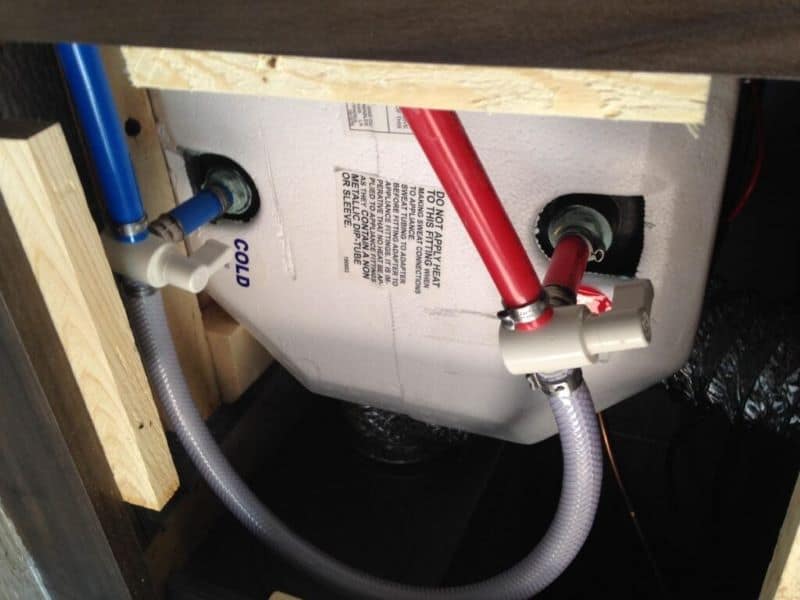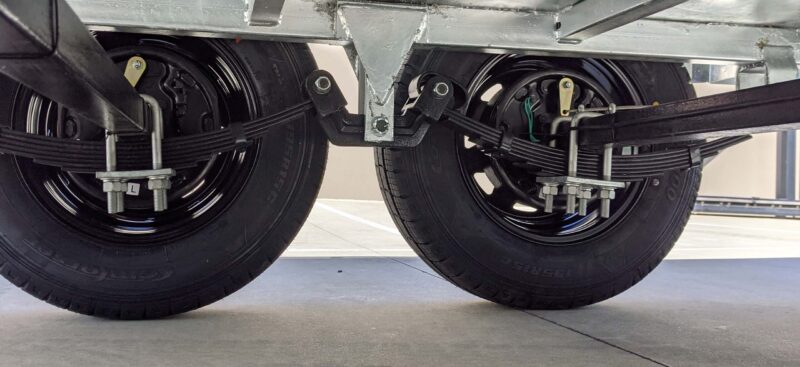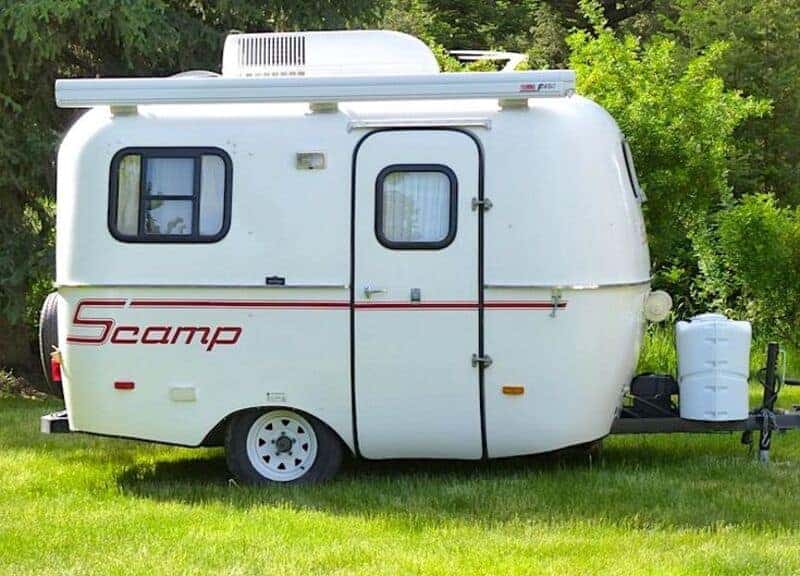In this article, we’ll show you the importance of the RV hot water bypass valve. You’ll learn how it works, why it’s needed, and its importance during the winterization process. So join us as we show the importance of your RV hot water bypass valve and why you need to know how to use it correctly.
Why is an RV Water Heater Bypass Valve Important?
The water heater bypass valve is a crucial component in the “winterize your RV” process. You won’t find a bypass valve on all RVs. Some simply don’t come with one installed. However, you can always rectify that by purchasing one on the third-party market. It makes the winterization process so much simpler and more convenient.
The hot water heater is one of the more important elements of an RV unless you like to take cold showers and wash your dishes in cold water. It brings a sense of comfort, home, and reliability to your RV lifestyle, which is something all RVers—part-time or full-time—can appreciate.
The bypass valves aren’t just winterization tools but also tools of convenience. It makes the drainage process on your hot water heater that much simpler. Some hot water heater manufacturers, such as Suburban, recommend changing the anode annually, a process that is more convenient with bypass valves.
How Does an RV Hot Water Bypass Valve Work?
There are two kinds of hot water bypass valves normally found in RVs. The first is a two-valve system, and the second is a three-valve system. There are also fancier, panel-controlled systems, which we’ll get to in short order.
A two-valve system uses 2 three-way valves. A three-way valve is a valve with 3 flow points of ingress and egress. Two valves operate three-way valves. It sounds more complicated on paper than it is in real life.
Two-Valve System
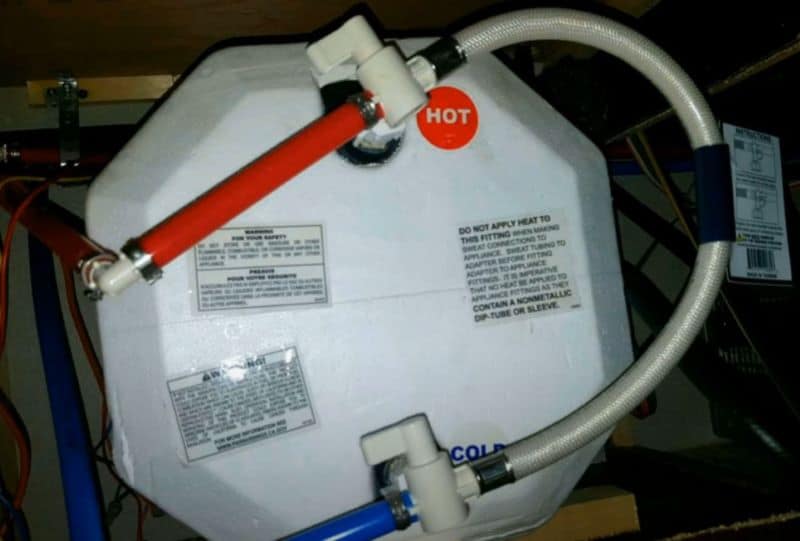
- Each three-way valve has one constant connection and two variables
- The valve on each simply shuts one of two connections, with the constant remaining open
- On a two-valve setup, the two valves should turn away from the hot water tank to shut off access to the water heater
Three-Valve System
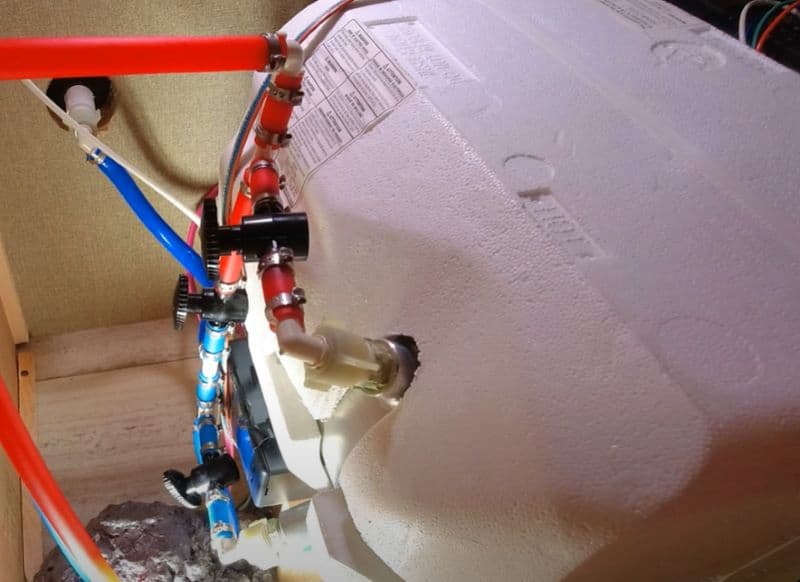
- A simpler setup
- One valve is on the hot water line
- A second valve is on the cold line
- A third valve, known as the crossover line, sits between the hot and cold, sealing them off from one another or allowing them to mix
- Turn off the hot line valve and cold line valve to seal off the water tank
- Open the crossover line valve to create water flow that bypasses the tank
- The cold and hot line valves are called “stop valves”
To review, if ever your hot water heater stops working, you can open the crossover line valve that bypasses the hot water tank.
Once you replace the broken hot water tank with a new one that works, then you close the crossover line to allow the cold water line to fill the new hot water heater.
The new tank will then send hot water into the hot water line throughout the RV for your shower, sinks, and RV dishwasher (if you have one).
Panel Controlled
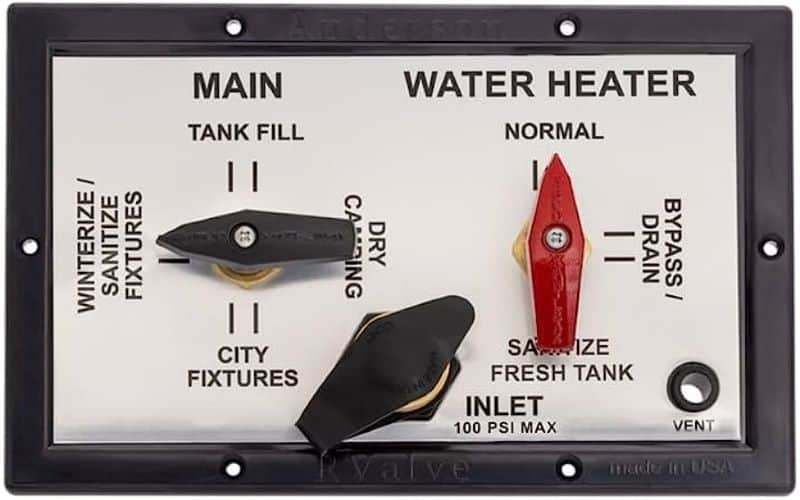
- Panel-controlled systems have a diagram on the panel plate
- The valves are located on the panel
- Turn the valves on the panel consistent with the diagram
- Water flow is restricted from the tank
If you’re not sure how to set the controls, look it up in your RV owner’s manual for instructions. As you can see from the “Main” control, there are different settings. For example, when you’re dry camping and relying on your fresh water tank, you set the control accordingly. If you’re hooked up to a campsite water hook-up, you turn the control to “city fixtures.”
When you store your RV and have your water lines winterized with RV antifreeze, there’s also a setting for that. Each setting opens and closes the water valves based on how the water lines are being used. This includes the hot water bypass valve.
Where is the Bypass Valve in the RV Water Heater?
Whether it’s a two-valve or a three-valve system, they will be located very close to the hot water tank, usually within a foot or two. The access point for your hot water heater is always on the outside of the camper, in a removable panel or storage bay.
Depending on how your hot water system is set up, access to the valves is either in a separate, adjacent panel, or you can access them from beneath the sink or stove inside the travel trailer. Either way, you should have just enough elbow room to adjust the valves accordingly.
Check out this video that explains RV Water Heater Bypass Valves:
Why Do I Need a Water Heater Bypass Valve in My RV?
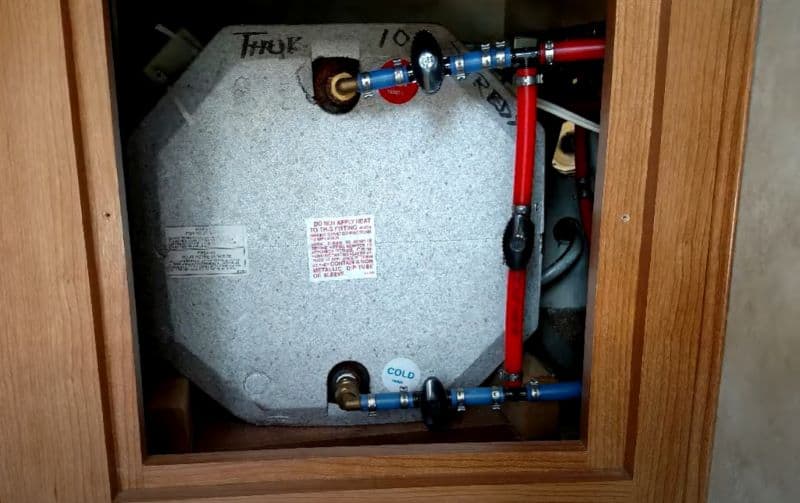
You need a water heater bypass valve to winterize your RV properly. It’s not necessary to put antifreeze inside the hot water tank. It’s ineffectual, and it would take a whole lot of it to properly fill up the tank so the antifreeze could do its job.
Besides, the hot water tank gets drained and, in the process, helps to descale it. A once-a-year cleaning is also good for it, with white vinegar being a prime choice for the job. But that’s entirely separate from winterizing your RV.
Antifreeze, even when heavily diluted by water, keeps the water from freezing. Water that isn’t frozen can’t expand. That’s the reason you want antifreeze in your pipes. The reason you don’t want it in your water tank is that it won’t do much good there.
Sometimes after using RV antifreeze in your water tank, the water can taste bad. Check out our article on RVBlogger.com called How to Remove Antifreeze Taste and Smell from RV Water.
Although RV-approved antifreeze is much better for your RV than that Ghostbusters-green stuff you put in your car, it can still be damaging inside your hot water heater. Newer hot water heaters, manufactured within the last decade, often require a complete drain and bypass of the hot water heater.
In fact, Suburban recommends draining their hot water heaters and avoiding the addition of anti-freeze, mostly because it’s corrosive to the anode and facilitates sediment build-up (Page 5 – Winterizing). Older RV hot water heaters are a bit different, which is why it’s very important to read the winterization section in your hot water tank manual.
Ultimately you want to follow the recommendations in your RVs hot water heater and RV owner’s manual.
Do You Have to Bypass the Hot Water Heater in an RV?
If you don’t bypass the hot water heater in your RV when you winterize it with antifreeze, all of that antifreeze that’s supposed to be in your pipes to keep them from drying out or cracking open during the winter temperatures will trickle down into your hot water heater. This will have the unfortunate side effect of leaving your RV water lines unprotected without the much-needed antifreeze.
When you come back to your RV after a long Minnesota winter, your hot water tank will be happily waiting for you, with a bunch of busted piping to go with it. Also, the hot water heater may have a broken anode and other damage inside the tank.
4 FAQs About RV Water Heater Bypass Valves
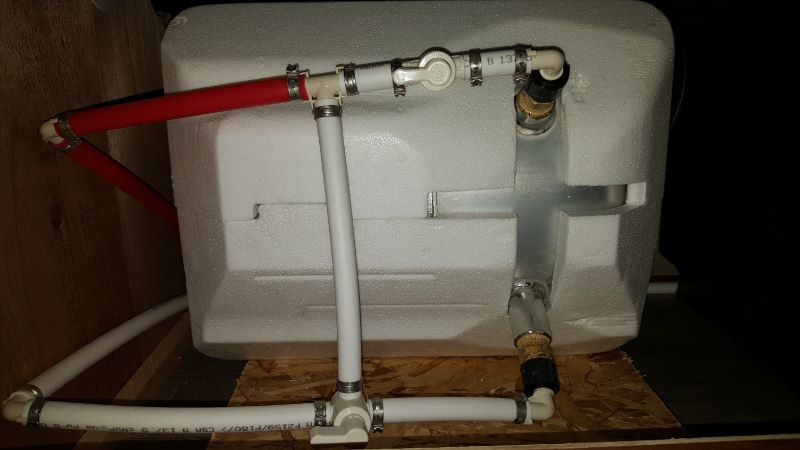
1. How do you tell if the bypass valve is open or closed?
If the valve handle is parallel to the pipe, it’s open. If it’s perpendicular to the pipe, it’s closed. Even if your controls are on one panel, performing a visual check on all the valves before you store your RV for the winter is a good idea.
2. Should I turn off my RV water heater when not in use?
You wouldn’t be violating any safety rules or anything by leaving the water heater on when not in use. Although, when you’re traveling, you can save battery power or propane by turning it off. If you know you won’t be using it for a while, to stay energy-efficient, turning the RV water heater off can save you a lot of wattage and LP as well.
However, you should definitely turn it off when you store your RV, and all of your water lines are winterized.
3. What happens if you run the RV water heater without water?
Running your RV water heater without water will cause the heating elements to overheat and burn up. It can also burn a hole straight through your water heater and potentially create a fire hazard.
4. What position should the RV water heater valve be in?
Unless you’re winterizing it, the RV water heater valve should be in the open or normal operating position. With two-way valves that will be parallel to the pipe. With three-way valves, it will point to the open line, with another open line perpendicular to it.
Final Thoughts on RV Water Heater Bypass Valves
As it turns out, those valves are pretty important. If you’re new to the world of RVs, you’ll quickly begin to understand the importance of the many systems on an RV. Many of the operations we take for granted in a residential home have to be closely monitored and maintained in an RV.
The water heater bypass valves are just a part of the overall preventative maintenance responsibility you hold in your hands the moment you drive off the lot with your shiny, new travel trailer. Fortunately, once you understand how the systems function, especially for winterization, it’s all pretty simple and common sense.
Related Reading
1. 11 Proven Ways to Eliminate RV Toilet Smells
2. What Size Generator Will Run Travel Trailer A/C?
3. How Often Should You Grease Travel Trailer Wheel Bearings?
4. How Many Gallons are in a 30-lb RV Propane Tank?
About the Author:
Thomas Godwin is a full-time freelance writer with a BFA in Creative Writing, a U.S. Marine, and an avid outdoorsman.
When he’s not writing, he’s raising chickens and Appleyard ducks. Thomas also constructs teardrop campers (attempting to anyway) and kayaks the Blackwater River with his wife, two daughters, and his Dobermans.


